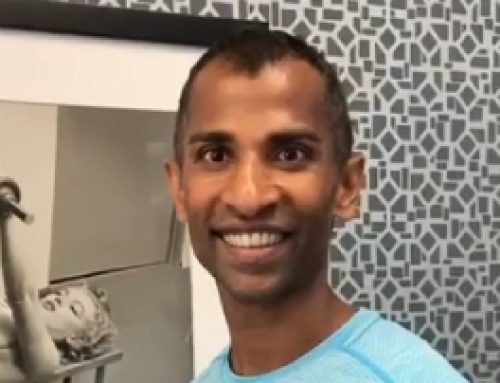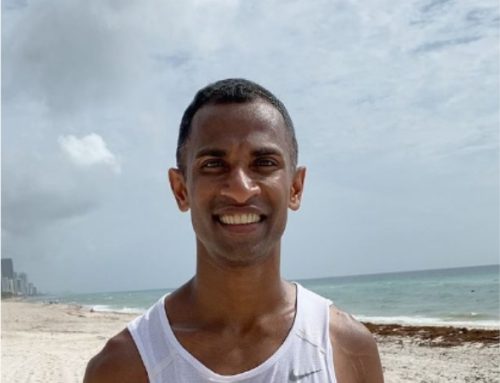If you are like most healthcare providers, you believe that your biggest responsibility is to provide the proper physical treatments to help an injured athlete/person recover or become pain-free. The general expectation we all have is that once we treat an athlete they should go back to performing to their previous same standards– isn’t that correct?
Unfortunately, that is not always the case. I have been “in the trenches” with professional male and female athletes for over 20 years and I have learned some lessons and experiences that I was not taught in a class…
I want to share these with you so you could have a new perspective and a new tool to fully help your athletes perform to their best – a 360-degree approach to treatment!
Once you treat an athlete, you may expect that athlete to recover and go back to their full performance capabilities. However, you may have noticed that this is not always the case.
Why is that?
What is it that you have not addressed in the athlete? What are you missing?
The athletes’ mental perception of their injury and their confidence may affect their performance in a negative way. You need to be aware that some athletes will often be worried that the injury could come back or that their recovered body part is still not strong enough – causing them to hold back on their performance or overcompensate in other body parts, frequently leading to an additional injury!
Worry, anxiety, and unconscious negative self-talk on the injury may compromise an athlete’s performance and you need to be aware and have a pulse on that. When a negative mindset prolongs, an athlete may go into a vicious cycle of consistently under performing and failing to live up to their previous standards stressing over that which affect performance again.
Look out for symptoms such as athletes’ sleep patterns and any deprivation, stress level, chronic fatigue, skin irritations, pimples, binge eating, mood changes, etc. These are strong indicators that something else is going on with the athlete…
If you want to be really good at your craft, your job should not entail in JUST treating the physical problem…we need to bridge and understand BOTH the physical AND mental mindset aspect of treating an injured athlete.
The link between body and mind impacts the performance and life of an athlete in a powerful way. It affects athletes in both ways – positive and negative. After recovering from an injury, an athlete may choose to believe they are 100% healthy even though their physical condition has been diminished. In that case, their performance will reflect their state of mind and they’ll perform to their best. Conversely, an athlete may be fully healed but may have mental reservations and fears and may hold back and under perform.
Having that in mind, we, as health care providers “in the trenches”, can play a significant role helping athletes perform to their best are not qualified to fix mental and psychological issues but we can help them build a strong and healthy “mindset”.
How do we do that?
At times, this is as simple as just being a genuinely caring person!Here are some suggestions to help you that have proven very effective for me to help my athletes recover and perform to their best!
• Be a good friend that athletes can trust
Once in a while, to help an athlete may mean to for to get out of your “physio” and just be a good friend to them. When they sense that you genuinely care about them and their well being, they’ll feel comfortable enough to talk openly with you about their fears, issues, and problems that is holding them back mentally from performing.
• Listen to better understand – go beyond the words
When you step back and take time to listen, you give other people that person the gift of your full attention. It makes people feeling heard, and appreciated and supported.
Don’t be absorbed in the words while listening. To find out why their physical performance is struggling, you may want to listen to your gut/intuition and play detective. Sometimes, an athlete may continuously complain about back pain when in reality, they might be struggling with some personal family problem, not sleeping in the right posture, or eating inflammatory food Lean on your intuition and ask the right questions to understand – is this a problem you can help with or guide the athlete to the right resources?.
• Look for subtle cues
Observe and pay attention to their body language, behavior, and mood. You’ll most likely notice when they avoid eye contact, distract themselves by typing frantically on their phones, or give you an odd smile. Going for a walk or having lunch with them for some uninterrupted one-on-one time is a good idea to connect with them and find out what hidden issues are undermining their performance.
Conclusion
Mental mindset and physical states are intertwined in healthcare; they are not silos, they work together. As people “in the trenches”, we have to understand and take a 360-degree view of our treatment approach. This is what has helped me to keep my athletes healthy and performing to their best and to become amazing human beingseven outside the sports world.
Treat them as your family members with true genuine care and they’ll heal faster and perform better. When your efforts are directed toward helping a struggling human instead of an athlete, a miracle may happen.


